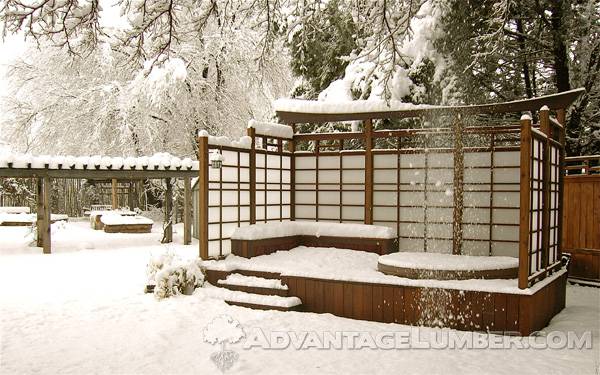
With Winter right around the corner, many people are asking us about ipe decking’s capacity for snow load.
Since no two decks are the same, it’s hard to pinpoint exactly how much snow per square feet it would take to actually distress a deck to the point of breaking. BUT, what we can say for sure is that ipe decking has been ASTM-D143 tested. Ipe wood decking has a maximum bending strength of 22,560 psi (Pounds per square inch)! your ipe deck might even be stronger than the frame that supports it!
Or, to put it more simply: The result of these tests reveal that ipe decking is 3 times more durable than cedar decking.
If you already own an ipe deck, you’re probably not even sweating the upcoming winter. And, for good reason. With ipe wood’s high density, tight, interlocking grain, and natural oils, it dries fast and weathers well. Also, when you follow the recommended finishing schedule, (using a deck finish product like Ipe Oil™) you can also have peace of mind knowing that your deck surface will be able to repel water even better than it already does!
When you buy ipe decking from us, you will also get premium grade ipe from the Lapacho species. What does this mean for you? Well, it’s simple: